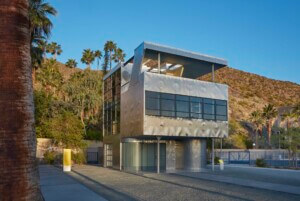In California, when it rains, it pours. At least, that seems to be the case when it comes to the flood of parking reforms taking place across the state.
The most recent example comes from San Diego, where this week, the city council passed a new parking reform package that eliminated parking requirements for sites located within 1/2-mile of a transit stop. The effort also sets new parking maximum—instead of minimum—requirements in certain areas, including in the city’s downtown. There, a maximum of one parking stall will be allowed per residential unit, with the added restriction that parking must be built below ground if it is built at all.
The city will now also require multi-family housing developers to provide so-called “transportation amenities” for their residents, including free transit passes, bicycle storage facilities, and on-site daycare facilities to help reduce automobile trips.
In new developments that require at least one stall, the new rules will require one Americans with Disabilities Act–compliant parking stall. For buildings with no parking, no ADA-compliant stalls will be required.
San Diego’s embrace of parking reform comes as Republican mayor Kevin Faulconer takes up the mantle of the insurgent “Yes In My Back Yard” (YIMBY) movement in a push to spur housing construction while meeting local climate goals. The reforms enacted in San Diego, for example, mirror some of the policies proposed in Senate Bill 827, a statewide pro-density, YIMBY-backed bill that drew controversy across the state. The efforts also mirror reforms taking place at the state level that have picked up steam under California’s new governor Gavin Newsom.
San Diego, like many California cities, is mired with high housing costs and surging levels of homelessness. Though politically noxious until very recently, doing away with parking near transit has come to be seen as an entry-level reform for spurring housing construction because aside from fueling automobile-dependant lifestyles, parking is, simply put, expensive to build. A city report estimates that each parking stall adds between $40,000 and $90,000 to the cost of each residential unit. Those front-end costs translate to higher monthly costs for renters and buyers, costly increases for a state where many residents spend the majority of their incomes on housing and transportation.
Further, from a design perspective, required parking imposes many limitations. Before the new ordinance, for example, parking requirements were tied to the number of bedrooms in each unit, meaning that larger residential units, the two- and three-bedroom configurations that are best suited for families, could require up to three or four parking stalls per residence. The requirements are particularly onerous for small- and medium-scale developments on tight urban lots, where required driveways, exacting stall dimensions, and other car-related required elements fundamentally shape not just building design but often, the number of housing units that can be built overall.
Cities across the state are becoming wise to the high cost of free parking, however. San Francisco and Sacramento are pursuing their own city-led efforts to curtail parking requirements while Los Angeles’s Transit-Oriented Communities program has successfully sought to induce developers to build affordable housing in lieu of car stalls.











